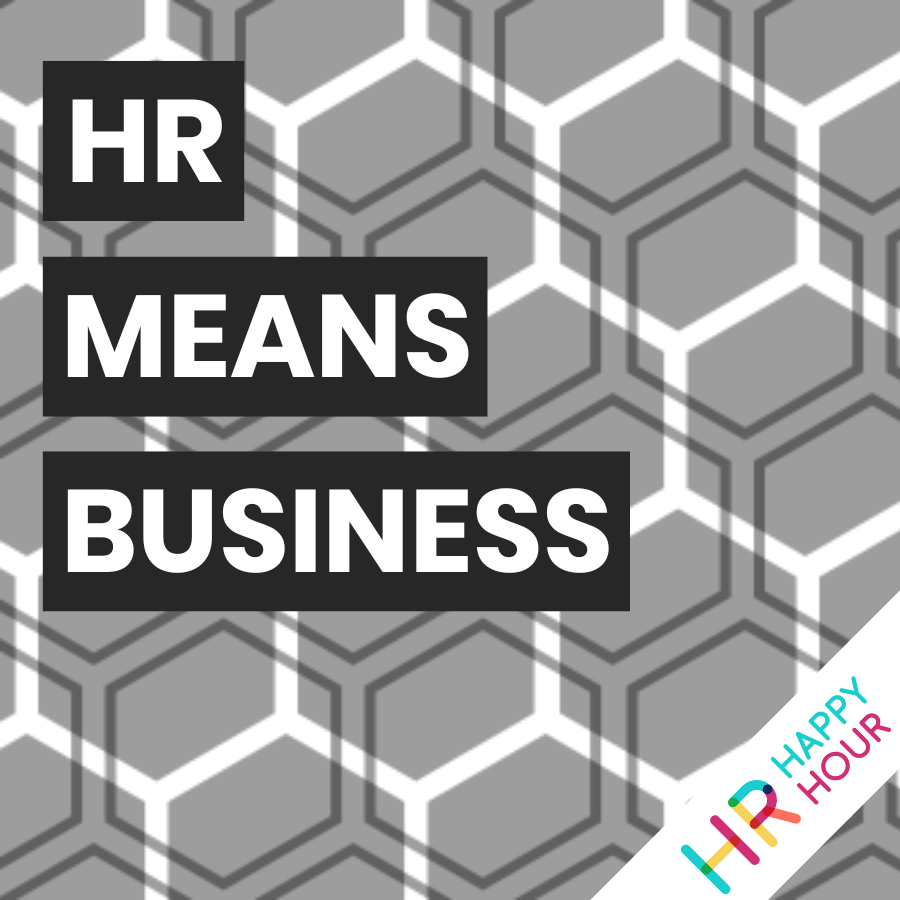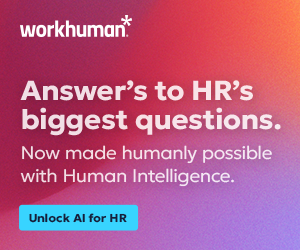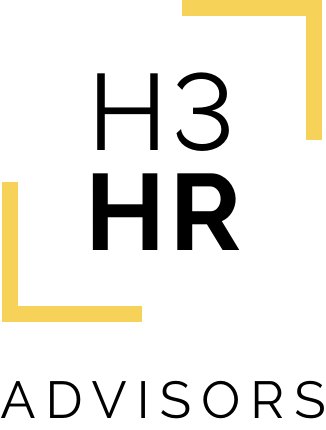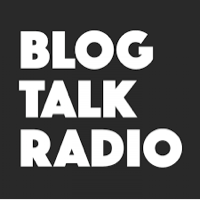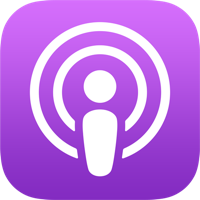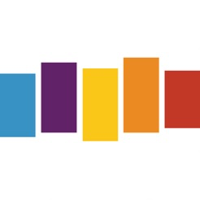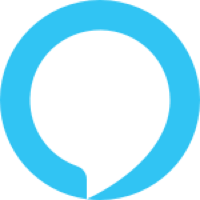Living Culture: Unveiling the Power of Daily Interactions
Hosted by

Mervyn Dinnen
Analyst, Author, Commentator & Influencer
About this episode
HR Means Business 9: Living Culture: Unveiling the Power of Daily Interactions
Host: Mervyn Dinnen
Guest: Abbie Cowan, Chief People Officer at World Education Services
In this episode Mervyn talks to Abbie Cowan, Chief People Officer at World Education Services, about the importance of culture and messaging in an organisation whose mission can often be the subject of negative external narratives.
They discuss:
– Maintaining balance when culture and mission are drivers of engagement & retention
– Appropriate messaging when your business is regularly touched by external narratives
– Measuring and assessing culture
– How HR can involve other leaders in understanding culture
– Including leaders in the conversations around trends such as the impact of Conversational & Generative AI
Thanks for listening! Remember to subscribe to all of the HR Happy Hour Media Network shows on your favorite podcast app!
Transcript follows:
Mervyn Dinnen 0:15
Hello and welcome to the HR Means Business podcast, which is part of the HR Happy Hour Network. I’m your host Mervyn Dinnen. And today I’m delighted to welcome to the podcast, Abbie Cowen, and we’re going to be talking about culture. Abbie, would you like to introduce yourself?
Abbie Cowan 0:32
Yeah, I’d love to. Thanks, man. So as I said, my name is Abbie Cowan. And I currently live and work in the US, but was born in England and had the opportunity to work across lots of different countries industries, and seeing culture in play in different environments. So very happy to jump in and talk about this topic.
Mervyn Dinnen 0:54
And you’re currently at World Education Services as Chief People Officer, is that correct?
Abbie Cowan 0:59
Yes, yes, that’s correct. I’ve been here a little over five months, where our nonprofit social enterprise that focuses on international students, immigrants and refugees coming into the US and Canada. So it’s a very interesting, insightful organization that does a lot of really important work. So very excited and happy to be leading that people function here.
Mervyn Dinnen 1:25
That’s good. And in fact, one of the reasons we’re talking today is because we’re gonna be talking about culture. And in an organization such as yours, this is obviously highly important. But first, you and I both took part in a webinar recently about the the impact of AI conversational and generative AI, the impact it might have on human resources. As an experienced HR director, who’s worked in in different sectors, obviously, Secretary now you’ve also worked in technology, I think, and other sectors. How do you differentiate the latest trends, kind of all the new stuff that we’re all talking about online? And on LinkedIn and stuff? How do you how do you decide which, which are the ones to act on? Which are the ones you need to incorporate? And which, you know, you just not right for your organization?
Abbie Cowan 2:20
Yeah, I think it’s a really great question. And it comes down to taking a kind of analytical approach as you as you think about these issues and being very contextually focused. So something that might be really important for one organization may not be relevant for another. So there’s a lot when it comes down to the context of your organization, not only like industry and sector, of course, that’s a really important context. But are you a global organization? Are you local? Are you business to business are your business to consumer these things all add in in terms of the filter and the lens that you need to look at? The other thing is looking at the context of the topic, you know, is there depth of content to it? Or is it? Does it feel like a lot of hot air with very little content behind it? So I always think that that’s important. And then how many places are you hearing about that topic? Are you hearing about it from within the organization, outside the organization within network groups, the more and more places that you’re coming into contact with a topic and the more that is appearing, the more I would pay attention to it and look at the relevance. So it reminds me a little bit of going back to university days where you would take something and you think, right, okay, let’s do some research and some qualification in terms of this piece, and understand just how relevant it is.
Abbie Cowan 3:48
And that can be really hard to do to you know, this is a topic that I’ve been talking about with my, with my own team, recently, we were talking about big rocks, little rocks. And there’s a great video out there, if anyone wants to go and look at the big rocks with the rocks video, because you can often get really over focused with a lot of the activity that’s going on. So what in that concept would be the sand, but if you don’t concentrate on some of the big rocks and put those in as your priorities first, you can’t fit them in if you’re focused on all the little stuff. So how do you focus down on what really is going to make a difference, like what really is going to have an impact on your industry on your sector or on your function. And particularly in this area, you know, I think generative AI and, and technology as a whole is going to have a huge impact on HR and you’re seeing it coming in in so many different guises with different lenses. So it is something that’s really really important to pay attention to. Whereas I think some of the other things feel like it’s a lot of not got a lot of substance behind it. And so maybe that’s not something to Spend your time consumed with and to get ahead of the curve on whereas that something like AI, I think is a really important area to get ahead of the curve on and be having conversations at the right place within your organization about how are we going to drive that forward? What does that mean for us? How do we see that ends playing into our strategy up on our approach?
Mervyn Dinnen 5:23
So you mentioned the internal conversations and thinking of internal conversations. So with leaders and managers elsewhere in the business, how do you impact those? It’s it? Is it a case of of kind of flagging it up to them that this is something we need to look into? Or do you possibly go and almost report to them? You know, this, this is what we need to be embracing? How do you start start the conversation?
Abbie Cowan 5:50
Yeah, so I, I am a really big fan of having extensive discovery conversations. So you start to take a topic, give it some context. And I’m thought that then with a with a group of stakeholders that work around, you know, what does that mean? Like, what what we think what we think from different lenses, I think, that really lends itself to diversity of thought and getting different perspectives around the table. Because the risk is especially leading in a particular area, you feel like you have to come to the table, always with the solution, but you have predetermined and gone down a certain road and Avenue. And I don’t think that that’s totally the remit of the job, the remit of the job is to identify, Okay, what are the important topics and then identify how do I give oxygen to enough people across the organization for us to have a an expensive and meaningful conversation about that, and I haven’t predetermined the outcome, or the solution, I mean, predetermined where we need to get to in terms of an outcome, and then the intent, but the solution can be different along the way. So I do think it’s important to have that conversation with different leaders from different disciplines and different insights, so that you’re able to make a good decision in terms of in terms of what happens next, and that you have engaged with people across the organization, and you have transparency and clarity in terms of what does that mean for us, and we can then close the loop. Let me go back with solutioning, what’s happening next, and so on.
Mervyn Dinnen 7:30
Okay, and obviously, it’s an education business that you’re in. So it’s all about learning. Now, we’re looking at culture. And obviously, things like what we hear about quiet quitting, bare minimum Mondays, those kinds of fans as well. But things like I suppose the approach to AI is because it’s also fairly cultural. But I’m thinking your business is a nonprofit, social enterprise, it supports immigrants and refugees. So you’re regularly touched by, shall we say, political narratives, particularly in the mainstream media, both in Europe and the US? And some of these narratives can be quite polarized as a business? How do you decide for the people who work there? And obviously for the students who have? How do you decide when to comment if to comment, what to say? And how do you factor in the impact it might have on the people who work there as well as the people that you’re up skilling?
Abbie Cowan 8:32
Yeah, it’s a really great question. And it’s a difficult one, because there’s no, there’s no one answer, but it is about stopping and being thoughtful and considering the particular event situation in that scenario, and then analyzing it in our context. So so we’re very conscious as a nonprofit social enterprise that we are not, we do not have political affiliation as as an organization, and we have to maintain that neutrality. But we’re still operating in a highly politicized environment. And often, like you say, there’s events that would would touch the work that we’re doing, or equally touch our people. We have around 50 nationalities across our organization. So there’s a lot of complexity into connectivity when you when you look at that. So what we have been focusing on and working within is thinking about, is this something that has direct relevance to the work that we do, that has direct relevance to the communities that we serve or has direct relevance to our people? And then how do we need to respond? So we have formed within the organization, a rapid response committee, where we stop and we look at those events, incidents, bringing into play a number of different colleagues across the organization. And who can lend their perspective and experience from our social impact policy and advocacy team from our business operations team, from communications from from the people team to really stop and think, What should we do? What does that look like? How do we talk and communicate to our people? Is this a situation where we want to focus on and offer resources. So for example, recently with the terrible earthquakes that happened in Turkey, and we’re reaching out to our people, and I’m just letting them know, the resources that we could provide them with access to and then as an organization, we also looked at where we could fund some relevant partners who are doing important work in that space. So it’s really about stopping and thinking, you know, how do we, how do we comment on this? What is our commentary? And how is that from a human centered approach, but not from making any kind of political statement?
Mervyn Dinnen 11:06
Yeah, it must be a difficult juggling out some some days, I guess. Now, when we had a chat, before we started recording, we talked about the culture isn’t a message on the wall, it’s a day to day interaction that people have. And so for a business such as yours, culture, and mission, have probably the key drivers of employee engagement, and retention. And yet, as we’ve just said, You people are constantly being impacted by external events that in some way, impact part of the business, the people within who you’re educating, or the work you do. As an HR leader, I suppose I’m interested in how you provide the balance with between external commentary, but maintaining the internal culture at the same time.
Abbie Cowan 12:02
Yeah, it’s, it’s definitely a balancing act, especially in an organization where we have our teams are very externally focused at times working with partners working in into federal government working into local government or working across different sectors and industries. So they have a lot of external facing activity. But then, obviously, you know, we are an organization and have our own an internal focus to and how do we create and focus on that culture, I think we’re extremely lucky as an organization, and that we have a highly engaged workforce, who all are very connected to them mission and the vision of the organization very, very focused in terms of making a difference and having an impact. But that in itself brings its own challenges in terms of pacing, and how do we make sure that we’re not taking on too much, and our people are not trying, you know, trying to do too many things at once? How do we prioritize? How do we, how do we work effectively, how do we work in a connected way when we’re not connected, face to face in person. I loved what you said at the beginning, and it completely resonates with me, because culture is not about a slogan written up on the wall or a set of values that we have up on our website. For me, it is very much about the day to day interactions that I have that the touch points that I have across the organization, and how that makes me feel connected with the organization, how I feel seen how I feel that I belong, and that I make a difference are those really deep elements that connect you with an organization that connects you with activity, that that’s what culture is for me, but obviously, that is a lot more complex than writing a nice slogan that we can put up on the wall. And it means that we have to think about it from multiple in multiple ways, you know, how do we how do we think about how we communicate with our, with our people? How do we make sure that we’re sharing that communication that we’re sharing, you know, what’s happening across the organization? How do we scale our people, leaders so that they’re able to manage their people really effectively.
Abbie Cowan 14:29
And so you know, any of my colleagues who have been in HR for any period of time, I’ve experienced the phenomenon of people getting promoted to a people leader, because they’re really good at what they do. And then suddenly, they have to do this whole different thing that they’ve never done before. So like how do we how do we support people, leaders? How do we make sure that they’re given the tools and the resources and the skills and also the space in terms of being able to process what that means and being able to learn and then for for all of our employees cost the organization like how, how do we balance and in terms of their needs, the needs of the organization, the needs of the work? How do we look at that? So we have, you know, lots of different places where we have touch points, maybe at a very systematic level in terms of engagement surveys, DEI, surveys, and then at a more organic level around, how do we create networks and groups and places where people can come together, which has become even more important as we move into a world where people are working from all different places, and they’re not sat next to each other in the office. So how do we create employee groups and employee touch points, and also find places where we can celebrate new celebrate each other celebrate what we’ve done as an organization celebrate wins? I think that power of celebration sometimes gets missed and forgotten. But you know, as human beings, we, we crave connectivity, like we crave being part of a group. That is why the tribe is so such a strong thing. So, no, I think it’s really important that we don’t forget about those events, those celebrations, those things that bring people together, they make they make a massive difference. And I think that was one of the things that people really struggle with where through the pandemic, for example, having that ability to connect and to celebrate and to come together taken away from you.
Mervyn Dinnen 16:41
Is this something that all leaders in the business are aware of? Or is it something you think that is, particularly I suppose for like yourself in HR, that something that you take the lead on? And then you’ve got to almost encourage other leaders in the business who may be may have other priorities and concerns depending on on their areas of influence? Is it something that they’re aware of? Or do you find yourself kind of nudging them? Shall we say?
Abbie Cowan 17:12
Yeah, I think that really depends on the organization. So I can say in my current organization, I am super lucky. I have a leadership team who, who are deeply thoughtful about this area and deeply focused in terms of how do we make sure that we’re bringing everybody along that we’re connecting to people across the organization, I do think you have a different level of responsibility as the chief people officer in terms of okay, what’s the strategy? How do we drive that? How do we advise how to how do I advise the organization and advise the team is the best ways that we can move that forward, you have a responsibility in terms of in terms of that and a responsibility in terms of guiding what could be the strategy, the approach the the avenues, but everyone has a responsibility in terms of that view to the culture of the organization, because it is organic, it is those day to day interactions. So what makes a difference is my relationship with my manager, my relationship with my peers, and colleagues, that’s what I feel and experience every day. So I think it is everybody’s responsibility, but the chief people officer or the chief HR officer has a special responsibility in terms of defining the roadmap and helping to drive that forward. And also being the voice in the room to remind people to come back, just like the CFO has a responsibility to remind people to come back to the bottom line. So I think it is like that guide along the journey.
Mervyn Dinnen 18:54
It’s good. Now you mentioned surveys, I think earlier. So in terms of, I suppose measuring or shall we say assessing culture, internally? Are there any tools that you use? What what kind of role does technology play in that?
Abbie Cowan 19:08
Yeah, I think I think technology is so crucial and something that is and represented in HR departments genuinely. So I think traditionally, as HR have recognized technology, it’s been using it on lagging indicators, you know, looking at some of those lagging indicator areas like attrition or absence or, or other kind of past indicators and analyzing that where I think AI and big data really take us into a whole new realm where we can start looking at predictive analytics. So looking at data sets and sources and Being able to say, identify typical patterns and then saying, okay, in that scenario, what might happen in the future for our people? So how can we get ahead of things, so we’re not reacting to something that happened in the past. But we’re reacting ahead of time to think about what that means for our people. And that can be across a whole range of different areas. So you know, if we see an area of our business where the demand or the or the type of work is changing, and we need to change the skills of our people, like how do we do that, ahead of time and using analytics to be able to identify what would be the most impactful in terms of us upskilling rescaling supporting our people, and getting in front of the curve so that we can really drive that forward, I still think up clearly, any data can be really useful and helpful. So it’s not a case that that we shouldn’t be looking at lagging indicators. But the more of a data story, we can tell. And we can take multiple pieces of data, the better. And this is where technology can really help us, for example, in a prior organization, I was looking, we were looking at attrition.
Abbie Cowan 21:21
And we were looking at it just through a particular lens. But then when we started to look at it and placed additional filters across it to look at okay, well what does it mean for attrition of women? And what does it mean for attrition of women at a senior level within the organization? And what does it mean of attrition of senior women at a certain level of the organization within their first year. And that tells a really different story to us, just looking at attrition. And so you then are able to get much more specific with our actions. Because what we saw was, that was that was running four times as high as for men. So there’s a problem, it tells you that there’s a problem there, and you’re able to then pinpoint it and say, Okay, let’s do something very specific to address that problem. And then the beauty of data is being able to then look and see, did it work, like did what we activate work? Does it make a difference. So being able to use data in that way. And I always felt that, you know, it’s such a powerful story, when you can refer to a data story to lead you in terms of your strategy and discussion. And as a, as a chief people officer, it puts you in a different position in front of the board, it gives you a different level of impact and influence, because you are being very data driven, very analytical in your approach. And that is where I think we should be as HR professionals.
Mervyn Dinnen 22:53
So what advice would you give an HR professional, who maybe is facing some of this for the first time, and I’m thinking we’ve covered quite a bit of ground here. And we were talking, you know, at the beginning about five years, and then we were talking about, I suppose the the external narratives, and how that impacts internal conversations, how that impacts morale, how that impacts the culture. And then you’ve given a couple of great examples there about using data to measure where you do have cultural issues. What advice I suppose would you give to HR professionals who may be facing this for the first time where either it’s been flagged up, there is a culture or there’s an issue with culture, which might well be to do with attrition, keep leaving and say, this isn’t a great place to work. Or it might be that an external narrative is suddenly impacting your sector. And it’s something you feel that you need to have a voice about, what would be the advice?
Abbie Cowan 23:53
Yeah, that’s a few things that I would pull out. And fast I would be, don’t be too quick to react. So we’ve seen organizations, we’ve seen leaders who have a knee jerk reaction to something that’s happening. I strongly advocate taking the time, not too much time, but enough time to pause, to analyze, to understand to make sure that you’re solutioning for the right thing, because if you react too quickly, you’re often aren’t you often solutioning for the wrong thing for taking the time to analyze, to understand and to make sure that you’re addressing the right problem, rather than just the the tech can sometimes be the tail end of the problem, but you’re not addressing the root cause. So how do you go back to that? The second thing I’d say is, remember, you’re not an island. asked to come say that being a Brit. But you’re not you’re not an island and you have other people around them so around you so leverage them and that’s not just your team or though I would always advocate in terms of building a strong HR team. With people who have capabilities and strengths that you don’t have that, you know, that has always been my mantra, but also you have a team of peers, at lean into the CFO, lean into other peers who can, can also give you perspective, but be advocate in other areas, and you add it, and then it becomes a collective, it’s an executive responsibility, because culture isn’t executive responsibility doesn’t sit in any one place. And third is, think about how you can build and connect and use a network, that has always been so incredibly helpful to me at you, there will be somebody else who has faced what you’re facing a different point in time, or in a different context, learning from others, being able to connect and discuss with others, both in our kind of collective but also from a mentorship or, or that kind of relationship perspective, always hugely valuable. And if nothing else, someone that you can call and say, Ah, when you are stuck, and you’re not sure what to do, and I think that that is really, really important. But once you get to a place, make a decision and act. So the other thing I’ve seen is, you know, often it’s kind of analysis, paralysis, and there’s all of these different options. There’s never truly one solution for anything. So sometimes we just need to get behind an action and put it into into play and learn what we learn and evolve and adapt, because some of it will stick. Some of it won’t maybe it’s not the perfect answer. But you’ve started the momentum of making a change.
Mervyn Dinnen 26:49
Great advice that Abbie, if people are listening to this and would love to get in touch with you, what’s what’s the best, best way to interact with you?
Abbie Cowan 26:56
Yeah, LinkedIn, and big LinkedIn. Connect to me with me on LinkedIn, I’d love to I always love to connect with anyone and everyone. So please feel free to reach out.
Mervyn Dinnen 27:08
Okay, I’ll make sure that I put your LinkedIn in the notes that accompany this podcast. I’ve it’s been an absolute pleasure to talk to you. Thank you very, very much for your time. And I look forward to talking to you again at some stage in the future.
Abbie Cowan 27:24
Thank you very much.
Transcribed by https://otter.ai
Talk to us
If you want to know more about any aspect of HR Happy Hour Media Network, or if you want to find out more about a show topic, then get in touch.

